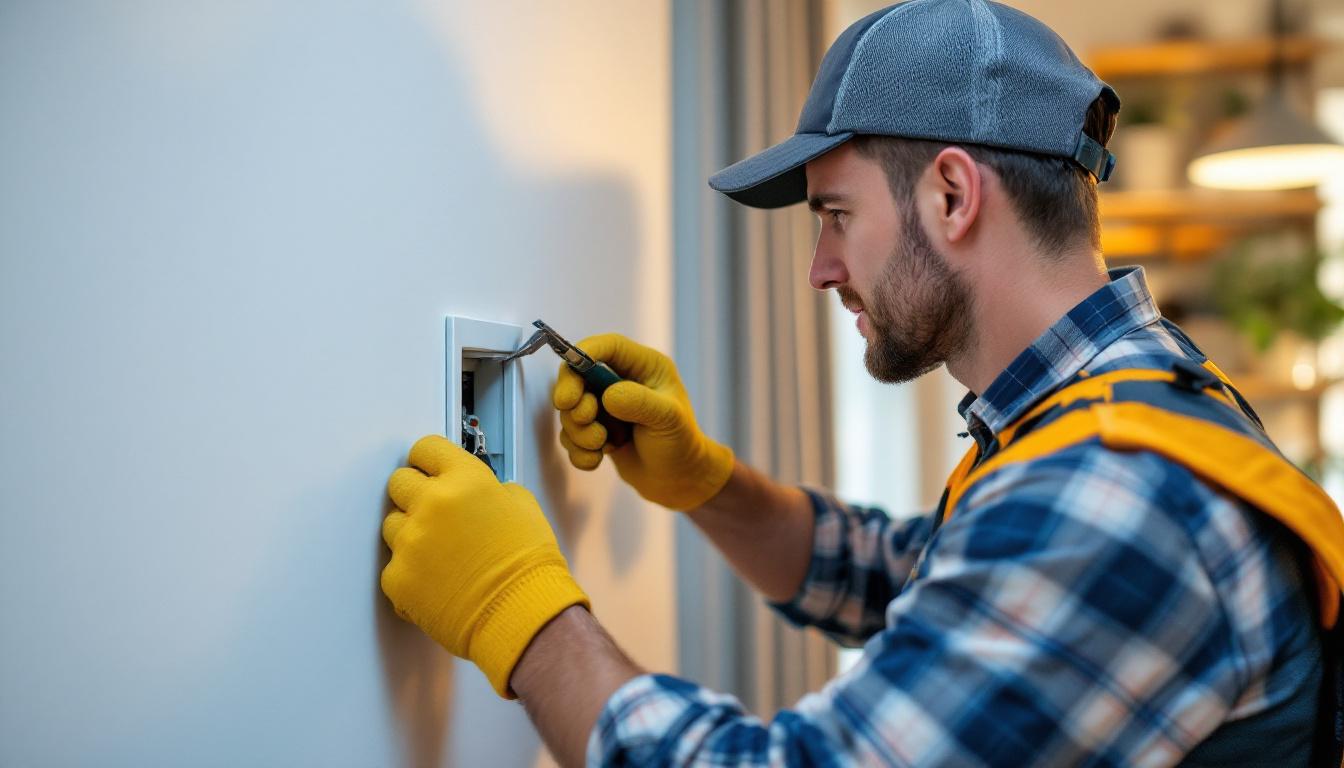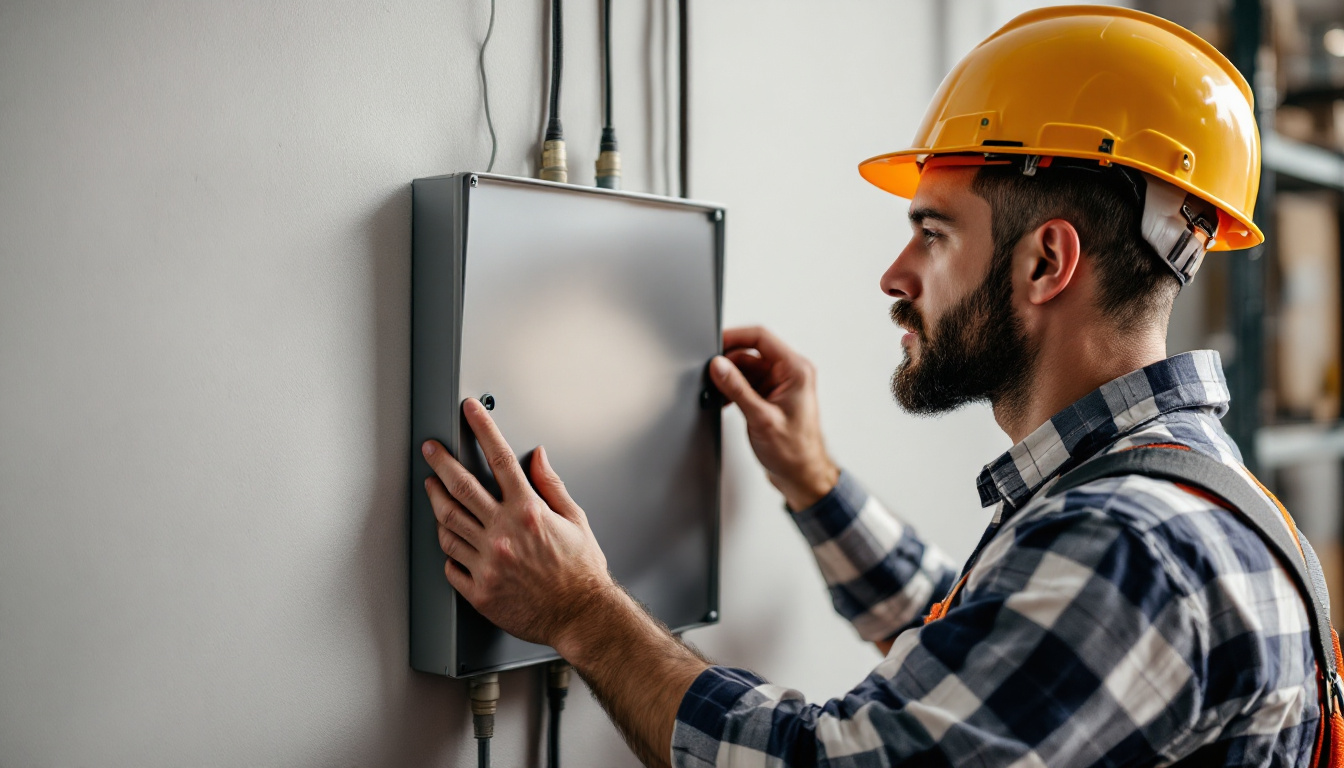
Lighting contractors face a myriad of challenges in their work, and one often overlooked aspect is the installation and management of outlet box covers. While they may seem like a minor component in the grand scheme of electrical work, outlet box covers play a crucial role in both functionality and safety. This article explores the top challenges lighting contractors encounter with outlet box covers, providing insights and solutions to enhance efficiency and ensure compliance with industry standards.
Outlet box covers serve as protective barriers for electrical connections housed within outlet boxes. They come in various shapes, sizes, and materials, designed to suit different applications and environments. Proper installation is essential not only for aesthetic purposes but also for safety, as they prevent accidental contact with live wires and protect the electrical components from dust and moisture. In residential settings, for instance, a well-fitted cover can enhance the overall appearance of a room while ensuring that the electrical systems remain functional and safe. In commercial settings, the durability and reliability of these covers become even more critical, given the higher frequency of use and potential for wear and tear.
Despite their importance, many lighting contractors find themselves grappling with issues related to outlet box covers. Understanding these challenges is the first step toward finding effective solutions. Some common issues include selecting the right cover for the specific outlet type, ensuring proper sealing against moisture, and addressing the need for tamper-resistant features in areas frequented by children. Additionally, the installation process can be complicated by the presence of older wiring systems that may not conform to modern standards, leading to further complications in choosing the appropriate cover.
There are several types of outlet box covers available on the market, each designed for specific applications. Standard covers are typically used for general-purpose outlets, while weatherproof covers are essential for outdoor installations. Additionally, there are specialized covers for devices such as switches, GFCIs, and more. For instance, GFCI covers are designed to protect ground fault circuit interrupters, which are crucial for preventing electrical shocks in wet areas like bathrooms and kitchens. Furthermore, some covers come equipped with built-in safety features, such as childproof locks, which are particularly beneficial in homes with young children.
The variety in outlet box covers can lead to confusion, especially when contractors are working on projects with diverse requirements. Familiarity with the different types and their appropriate applications is crucial for ensuring compliance with safety standards. Moreover, understanding the materials used in these covers—such as plastic, metal, or weather-resistant composites—can also influence their performance and longevity. For example, metal covers may offer greater durability in high-traffic areas, while plastic covers might be more suitable for indoor use where moisture is not a concern.
Electrical codes dictate the standards for outlet box covers, including installation methods, materials, and usage. Lighting contractors must stay updated on local codes and regulations to avoid costly fines and ensure the safety of their installations. These codes often specify not only the types of covers that can be used but also the installation techniques that must be followed to guarantee safety and functionality. For example, certain jurisdictions may require that outdoor covers be rated for specific weather conditions, ensuring that they can withstand exposure to rain, snow, and extreme temperatures.
Failure to comply with these codes can lead to serious consequences, including electrical hazards and potential legal liabilities. Therefore, it is imperative for contractors to invest time in understanding the relevant codes and how they apply to outlet box covers. Regular training sessions and workshops can be beneficial for contractors, helping them stay informed about the latest updates in electrical codes and best practices. Additionally, consulting with local electrical inspectors can provide valuable insights into compliance requirements, ensuring that installations meet both safety standards and client expectations.
Lighting contractors frequently encounter a range of challenges when working with outlet box covers. These challenges can impact the overall efficiency of their projects and the quality of their work. Below are some of the most common issues faced in the field.
One of the most prevalent challenges is selecting the right size and type of outlet box cover. An ill-fitting cover can lead to gaps that expose electrical components, increasing the risk of accidents. Conversely, a cover that is too large may not fit securely, leading to potential safety hazards.
To mitigate this issue, contractors should take precise measurements of the outlet boxes before purchasing covers. Additionally, keeping a variety of sizes on hand can help address unexpected situations on the job site.
The choice of material for outlet box covers can significantly affect their performance and durability. Common materials include plastic, metal, and weather-resistant compounds. Each material has its advantages and disadvantages, which can complicate the selection process.
For instance, while plastic covers are lightweight and easy to install, they may not be suitable for high-traffic areas or extreme weather conditions. On the other hand, metal covers provide enhanced durability but may require additional grounding. Understanding the specific requirements of each project can help contractors make informed decisions about material selection.
Proper installation of outlet box covers is crucial for ensuring safety and functionality. However, contractors often face challenges during the installation process, such as misalignment, inadequate sealing, and difficulty accessing the outlet box.
To overcome these challenges, contractors should adopt best practices for installation. This includes using the right tools, following manufacturer instructions, and ensuring that all components are securely fastened. Additionally, training and experience can significantly enhance a contractor’s ability to handle installation challenges efficiently.
Safety is paramount in electrical work, and outlet box covers play a vital role in maintaining a safe environment. Contractors must be aware of the safety considerations associated with outlet box covers to protect both themselves and their clients.
Exposed electrical connections pose a significant safety risk. Outlet box covers are designed to prevent accidental contact with live wires, but improper installation or the use of substandard covers can compromise safety. Contractors must ensure that all outlet box covers are securely installed and meet safety standards to minimize the risk of electrical hazards.
Regular inspections of installed covers can also help identify potential issues before they become serious problems. This proactive approach not only enhances safety but also builds trust with clients.
For outdoor lighting installations, weatherproof outlet box covers are essential. These covers protect electrical connections from moisture, debris, and temperature fluctuations. Failure to use appropriate weatherproof covers can lead to equipment failure and pose safety risks.
Contractors must be diligent in selecting and installing weatherproof covers for outdoor applications. This includes ensuring that all seals are intact and that the covers are rated for the specific environmental conditions they will face.
To navigate the challenges associated with outlet box covers effectively, lighting contractors can adopt several best practices. These practices not only enhance the quality of work but also promote safety and compliance with industry standards.
Continuous education and training are essential for lighting contractors to stay informed about the latest developments in electrical codes, materials, and installation techniques. Attending workshops, seminars, and industry conferences can provide valuable insights and updates on best practices.
Additionally, investing in training for team members can enhance overall project efficiency and safety. A well-informed team is better equipped to handle challenges related to outlet box covers and other aspects of electrical work.
Using high-quality outlet box covers and related components is crucial for ensuring the longevity and safety of installations. Contractors should prioritize sourcing products from reputable manufacturers known for their commitment to quality and compliance with industry standards.
While it may be tempting to opt for cheaper alternatives, the long-term costs associated with poor-quality products can far outweigh the initial savings. Investing in quality materials can lead to fewer issues down the line and increased client satisfaction.
Clear communication with clients is vital throughout the project lifecycle. Lighting contractors should take the time to explain the importance of outlet box covers and the potential challenges associated with their installation. By setting realistic expectations and discussing safety considerations, contractors can foster trust and transparency.
Additionally, providing clients with information on maintenance and care for their outlet box covers can enhance their overall experience and satisfaction with the project.
Outlet box covers may seem like a minor detail in the world of lighting installation, but they are integral to the safety and functionality of electrical systems. Lighting contractors face various challenges related to these components, from sizing and material selection to installation and compliance with safety standards.
By understanding these challenges and implementing best practices, contractors can enhance their efficiency, ensure compliance, and ultimately deliver high-quality work that meets the needs of their clients. Investing in training, utilizing quality products, and maintaining open communication with clients are essential steps toward overcoming the challenges associated with outlet box covers.
As the electrical industry continues to evolve, staying informed and adaptable will be key to success. By prioritizing safety and quality in every aspect of their work, lighting contractors can build a reputation for excellence and reliability in their field.
Ready to tackle the challenges of outlet box covers with confidence? At LumenWholesale, we provide lighting contractors with the highest quality, spec-grade lighting products, including a wide range of outlet box covers to meet any project requirement. With unbeatable wholesale prices and no middleman, you get the best value for your investment. Our commitment to quality and affordability, coupled with free shipping on bulk orders, ensures you have access to the best lighting solutions without any hidden costs. Elevate your lighting projects with the reliability and performance of LumenWholesale products. Wholesale Lighting at the Best Value is just a click away.

Discover the ultimate guide to hall light fixtures, exploring styles, installation tips, and energy-efficient options to illuminate your space beautifully and effectively..

Discover essential insights on work lights near me for lighting contractors.

Discover the intricacies of motion detector lights from a contractor’s perspective.

Discover essential tips from lighting contractors on choosing and installing the perfect cover for your electric box.